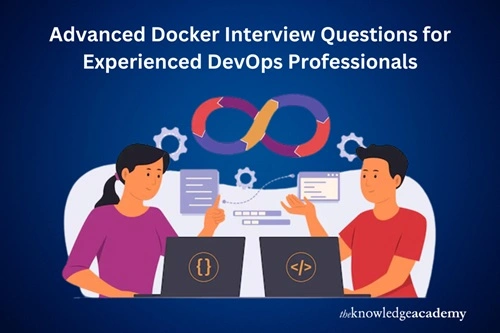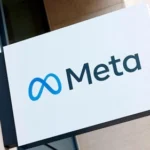Docker has established itself as a key component of DevOps procedures as more and more businesses use containerisation for their applications. Because Docker makes building, distributing, and operating apps in containers easier, it’s an essential tool for DevOps employees. For those who have completed a DevOps Course, the emphasis often shifts from foundational knowledge to mastering advanced Docker capabilities, architecture, and practical applications including understanding the differences between Docker Image vs Container. Experienced DevOps professionals must thoroughly understand these advanced aspects of Docker, while beginners may be assessed on the fundamentals.
This blog discusses advanced Docker Interview Questions that seasoned DevOps employees may encounter and offers advice on responding to them successfully.
Table of Contents
- Advanced Docker Interview Questions
- Conclusion
Advanced Docker Interview Questions

How Do You Optimise Docker Images for Production Environments?
Answer: Reducing build time, image size, and security flaws requires optimising Docker images. Skilled DevOps experts ought to describe methods such as:
- Using Multi-Stage Builds: Multi-stage builds help create smaller, more efficient Docker images by using numerous FROM statements in a Dockerfile and copying only relevant files to the final image.
- Choosing Minimal Base Images: To minimise the image size, start with a minimal base image such as Alpine rather than Ubuntu or Debian.
- Cleaning Up After Builds: After the build process, use commands like apt-get clean and rm -rf /var/lib/apt/lists/* to remove superfluous files and packages.
- Using .dockerignore Files: The .dockerignore file can exclude files and directories from the build environment, reducing the size and time of the build, much like .gitignore can.
What Are the Differences Between Docker Compose and Docker Swarm, and When Would You Use Each?
Answer: Docker Swarm and Docker Compose have distinct uses.
- Docker Compose: It is a tool for setting up and managing several containers on a single host. It is primarily used in development, testing, and staging environments when basic orchestration is adequate.
- Docker Swarm: Docker Swarm is the native clustering and orchestration tool from Docker that manages a cluster of Docker engines. It offers networking, scalability, and high availability for containers running on several hosts.
Because of its fault tolerance and scalability, Docker Swarm is recommended for production environments requiring several orchestration servers. Conversely, Docker Compose is best suited for smaller projects and local development.
Describe the Docker Networking Modes and Their Use Cases.
Answer: Several networking modes are supported by Docker to control container communication:
- Bridge Network: The standard network mode allows containers running on the same host to communicate.
- Host Network: This feature enables containers to utilise the host’s network stack, making it perfect for situations in which network speed is crucial.
- Overlay Network: This allows containers on many hosts to safely communicate with one another. It is used in Docker Swarm for multi-host networking.
- None Network: Apps sensitive to security can benefit from containers that operate without any network interfaces connected.
- Macvlan Network: Suitable for legacy applications needing direct network connectivity, this network gives each container a distinct MAC address, allowing them to appear as physical devices on the network.
Give examples of when each network option is most appropriate to show that you have practical expertise.
How Do You Secure Docker Containers in a Production Environment?
Answer: Docker container security requires several security layers:
- Use Trusted Base Images: Always begin with official and reliable base pictures to prevent vulnerabilities.
- Implement Least Privilege: Avoid running containers as the root user and instead run them with the fewest privileges required.
- Enable Docker Content Trust (DCT): It signs and validates container images to guarantee their integrity.
- Set Resource Limits: To prevent denial-of-service attacks, restrict a container’s resources using the memory and CPU parameters.
- Regular Updates and Patching: Apply the most recent security updates to host operating systems, container images, and Docker.
Talking about these recommended practices demonstrates your proactive approach to container security management.
What Is the Difference Between Docker Volumes, Bind Mounts, and tmpfs Mounts?
Answer: Three choices for persistent storage are offered by Docker:
- Volumes: Stored in Docker storage space and managed by Docker. Because they are portable and flexible, they are the recommended technique for persistent data.
- Bind Mounts: Map host directories to containers directly with Bind Mounts. They are more specialised and host path-specific, but they are also less portable.
- tmpfs Mounts: Useful for sensitive material that shouldn’t be kept on a disc, tmpfs mounts allow you to save data in the host system memory rather than persistent storage.
Outlining the benefits and use cases for each storage solution can show that you thoroughly understand Docker storage techniques.
How Do You Monitor Docker Containers in a Production Environment?
Answer: Monitoring Docker containers entails keeping an eye on their logs, health, and performance:
- Docker Stats Command: The Docker Stats command provides a basic summary of container performance including CPU, memory, and network utilisation.
- Prometheus and Grafana: Well-known open-source technologies for tracking and displaying container metrics are Prometheus and Grafana.
- ELK Stack (Elasticsearch, Logstash, Kibana): The ELK Stack aggregates and visualises Docker container logs.
- cAdvisor and Sysdig: Sysdig and cAdvisor are tools for monitoring container specific performance metrics and resource utilisation.
Talking about these technologies and their combinations demonstrates your proficiency in upholding stable Docker setups.
Explain How You Would Handle Docker Image Versioning and Tagging Best Practices.
Answer: For CI/CD pipelines, efficient Docker image versioning and labelling are essential:
- Use Semantic Versioning: Semantic versioning (e.g., 1.0.0, 1.0.1) for organised and easy to understand upgrades.
- Include Build Details: For traceability purposes include build-specific information in tags (e.g., 1.0.0-build1234).
- Avoid Using the latest Tag in Production: This may result in erratic deployments. To maintain consistency, use explicit version tags instead.
- Implement Automated CI/CD Pipelines: Using CI/CD tools, automate the build, tag, and push processes to preserve efficiency and consistency.
Comprehending these procedures guarantees dependability and stability in installations based on Docker.
How Would You Approach Docker Container Orchestration in a Multi Cloud Environment?
Answer: Networking, security, and compatibility issues arise when coordinating Docker containers across several cloud platforms:
- Use Kubernetes: Kubernetes is the industry-leading open-source container orchestration platform that facilitates hybrid and multi-cloud deployments.
- Implement Service Meshes: Istio and Linkerd are two tools for handling microservices security and communication between various cloud environments.
- Centralised Logging and Monitoring: Use technologies that work well with various cloud platforms to keep an integrated picture of container performance and logs.
- Security and Compliance: Ensure all settings have uniform security guidelines and compliance standards.
Your response indicates that you thoroughly understand sophisticated orchestration techniques in intricate settings.
How Do You Troubleshoot Docker Container Performance Issues?
Answer: There are multiple phases involved in troubleshooting Docker container performance:
- Check Container Resource Usage: Use docker stats to monitor CPU, memory, and network usage.
- Examine Container Logs: Look for faults or warnings pointing to performance problems in the docker logs.
- Network Diagnostics: Alternative network tools such as docker network inspection are used to find connectivity issues.
- Identify Bottlenecks: Examine the dependencies between the application and the container to locate bottlenecks, such as disc I/O or network latency.
- Use Profiling Tools: Sysdig, cAdvisor, and Dynatrace are a few tools that may be used to gain detailed insights into container performance.
Offering well-organised troubleshooting procedures demonstrates your aptitude for handling issues and your familiarity with Docker.
Conclusion
A thorough understanding of container orchestration, security, networking, and optimisation strategies is necessary to answer advanced Docker interview questions. Consider The Knowledge Academy to become proficient in these domains is essential for seasoned DevOps employees to ace interviews and highlight their potent Docker environment management skills. Understanding these advanced ideas will enable you to contribute significantly to your organisation’s DevOps strategy and confidently manage intricate Docker-based systems.
Hina Abbasi is Editor and a passionate sports and entertainment content writer at WinnersMaze.com. Hina’s expertise spans across a wide range of sports, and interest in many TV shows allowing her to deliver insightful analysis and compelling stories that resonate with readers.

